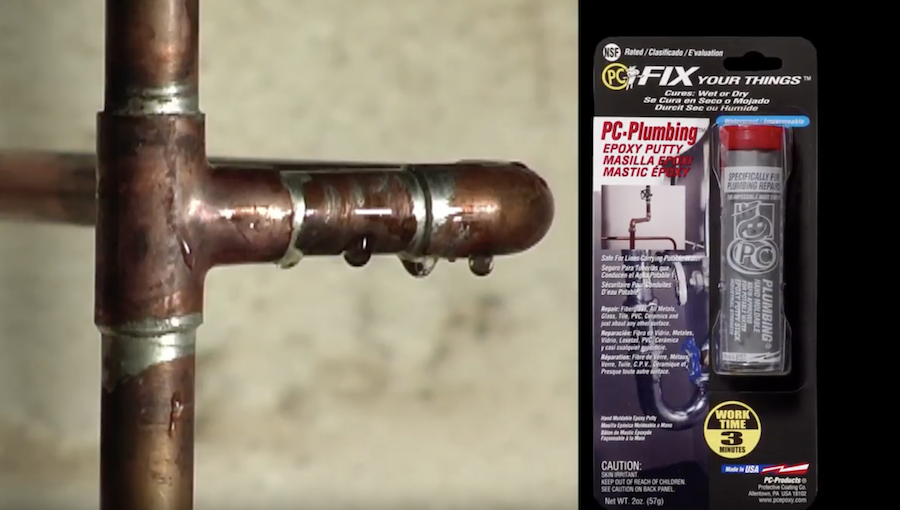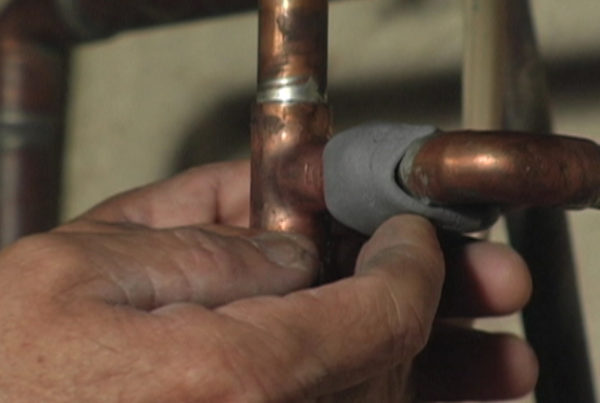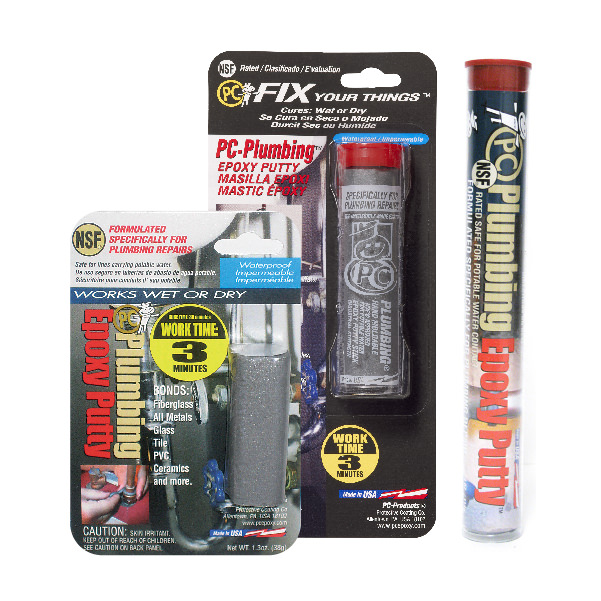
PC-Plumbing™ Epoxy Putty is for pipes. Use PC-Plumbing™ to stop leaks in less than 60 minutes. Pre-measured and easy to use and 2 part epoxy putty does not require tools. Hand mix and apply. NSF® approved for plumbing repairs and for contact with potable water supply pipes.
Here are just a few specific uses (there are hundreds of other uses):
- Seal leaks in copper pipes resulting from hard water
- Fix freeze damaged PVC and copper pipes
- Stop leaking copper elbow and tees
- Fill abandoned drill holes in ductwork
- Insulate electrical connections from water
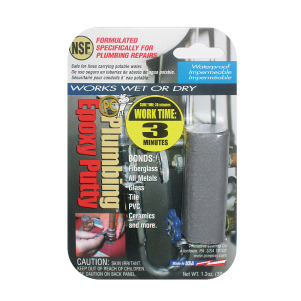
PC-Plumbing™ | 1.3 oz.
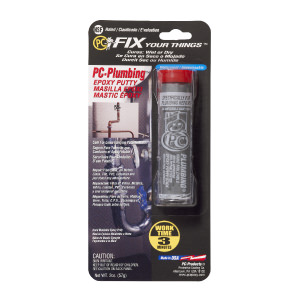
PC-Plumbing™ | 2 oz.
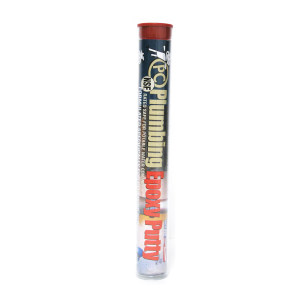
PC-Plumbing™ | 4 oz.
1.3 oz.: 1.7 cubic inches
2 oz.: 2.5 cubic inches
4 oz.: 5 cubic inches
How to prepare a surface for bonding with PC-Plumbing™
Remove contaminants such as dust, dirt, oil and grime with a solvent such as denatured alcohol (ethanol), acetone, rubbing alcohol (isopropyl alcohol) or lacquer thinner. Mild detergent solution in water is also good removing contaminants. Use a clean paper towel or rag for wiping. Remove rust and loose paint with sandpaper or wire brush. Epoxy typically sticks to most paints. If there is a concern of the paint’s adhesion then remove it with sandpaper, wire brush or paint stripper. Smooth, glossy and shiny surfaces should be roughened using sandpaper to increase adhesion. Adhesion to wet or damp surfaces can be improved by wiping with alcohol. Do not use mineral spirits or paint thinner for removing contaminants.
How to clean-up after PC-Plumbing™ application
We recommend wearing disposable gloves when mixing and applying epoxy putty. Remove from skin with soap and warm water. Clean up mixed epoxy before it cures with paper towels and solvent. Denatured alcohol (ethanol), acetone, rubbing alcohol (isopropyl alcohol) or lacquer thinner are suitable solvents for removing uncured epoxy. Cured epoxy can be physically removed by prying off with a screw driver or pliers. It can also be removed with paint stripper or remover.
Can PC-Plumbing™ be mixed in small portions? Can it be mixed in large portions?
PC-Plumbing™ can be mixed in small portions and will stick to cured PC-Plumbing™. Larger mixes are not practical because of the short work time.
Is PC-Plumbing™ suitable for repair to PVC pipe? ABS?
PC-Plumbing™ sticks to rigid PVC and ABS pipe.
How long should PC-Plumbing™ be mixed?
Mix PC-Plumbing™ for 45 to 60 seconds.
Will PC-Plumbing™ stick to an aluminum pot and is it safe for food contact?
PC-Plumbing™ is not approved for food contact. Although epoxies are relatively low-toxic, they are very limited for applications that involve food.
The water is turned off and there is a small drip. If PC-Plumbing™ works in wet conditions then why isn’t it stopping the leak?
After PC-Plumbing™ is mixed and applied it is soft and pliable. The drip is a small volume of water but has enough pressure to push the PC-Plumbing™ out of the way before it hardened. Even a drip caused by standing water can have enough pressure to cause leakage before it cures. PC-Plumbing™ does work in wet conditions but dry conditions are preferred.

